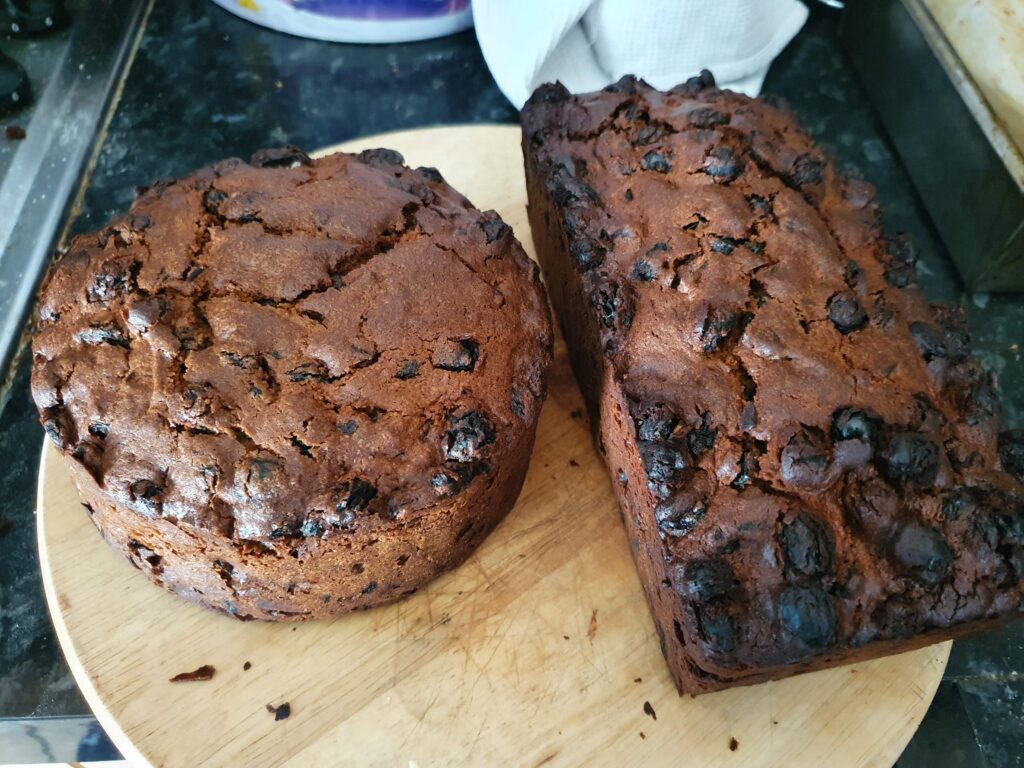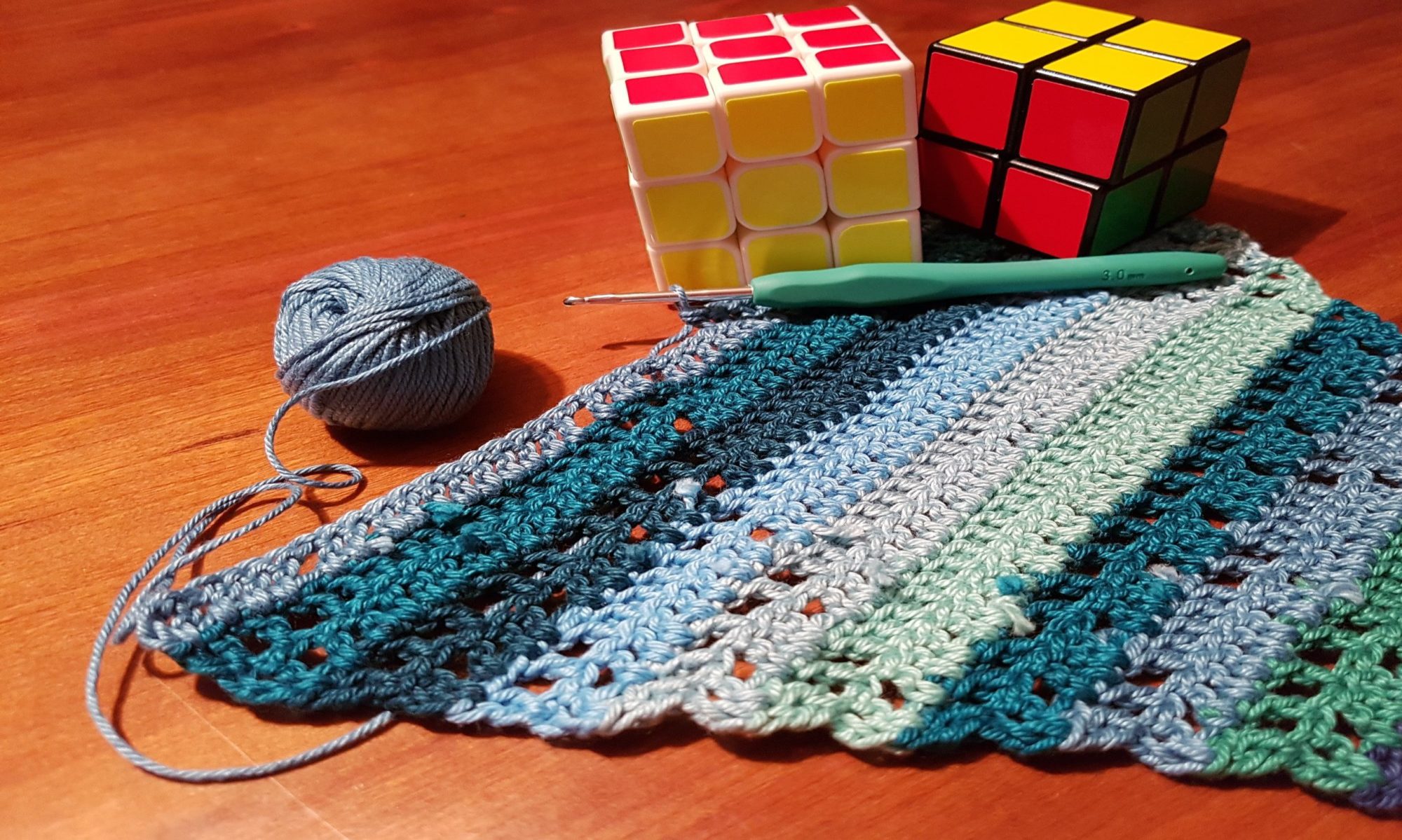Two small Christmas cakes.
I don’t make a Christmas cake every year, but most years since the mid 1990s one of my Christmas traditions has been to dig out the recipe handed down to me from Grandma Kiddle and weigh out a small mountain of dried fruit, soak it overnight in brandy, and then mix butter, sugar, eggs, flour and bake for several hours. Then over the following days and weeks I gradually introduce spoonfuls of brandy into the cake, before covering it with marzipan, royal icing, and some tatty little plastic decorations that I’ve had for years. My final Christmas Cake tradition is to take the cake with me when visiting various family who don’t make their own, and cut a chunk off for them to enjoy. What’s left goes home with me after Christmas where I eat a couple of slices and then get sick of Christmas cake, push the tin to the back of the kitchen worktop and forget about it, and then rediscover it later in the year to find it’s still perfectly edible because Christmas cake Never Goes Off!
This Christmas, like the year that led up to it, has been very different from previous ones. I still wanted to make cake, but I knew it was unlikely I could visit all the family who usually get a chunk of cake. Added to this, certain family members prefer their cake without icing, so I started to come up with a cunning plan. Instead of making one large cake and cutting chunks off, I would make smaller cakes, which could then be iced or not to people’s preferences! This is where the maths comes in…
The recipe I follow makes enough mix for an 8 inch diameter round cake tin. I was limited in what tins I had available; I dug through the kitchen cupboards and found I had a 6 inch round tin, various square tins and a loaf tin. I could have worked out volumes and then scaled the recipe but instead I decided to try to find a pair of tins that got me close to the same base area – the tins were all approximately the same height so I could do all my calculations with area rather than volume.
Approximating π as 3, my 8 inch cake tin has a base area of 4×4×3=48 square inches. The 6 inch cake tin has a base area of 3×3×3=27 square inches. This means I had 21 square inches to play with for the second cake, without needing to do any recipe scaling. Luckily one of my loaf tins is around 8 inches long and around 2½ inches wide, giving a base area of approximately 20 square inches (it tapers out but I figured that my approximations were only ballpark figures and the worst that could happen was a cake that was a bit flatter than I planned – it would still taste alright!)
The only other recalculation that two small cakes required was in cooking time. The 8 inch cake takes 3½ hours to cook, so I figured my two small cakes would need a bit less than that. I dealt with this problem by checking the cakes after 2½ hours and testing with a skewer – they needed a little longer and were done in about 3 hours in the end. The round cake was subsequently marzipanned and iced, to be enjoyed by me over the coming weeks, and the loaf cake was divided into 2 squareish chunks and sent off without icing to be enjoyed by family. It all worked out rather well, and I suspect my new Christmas tradition will be to make two smaller cakes every year from now on!

